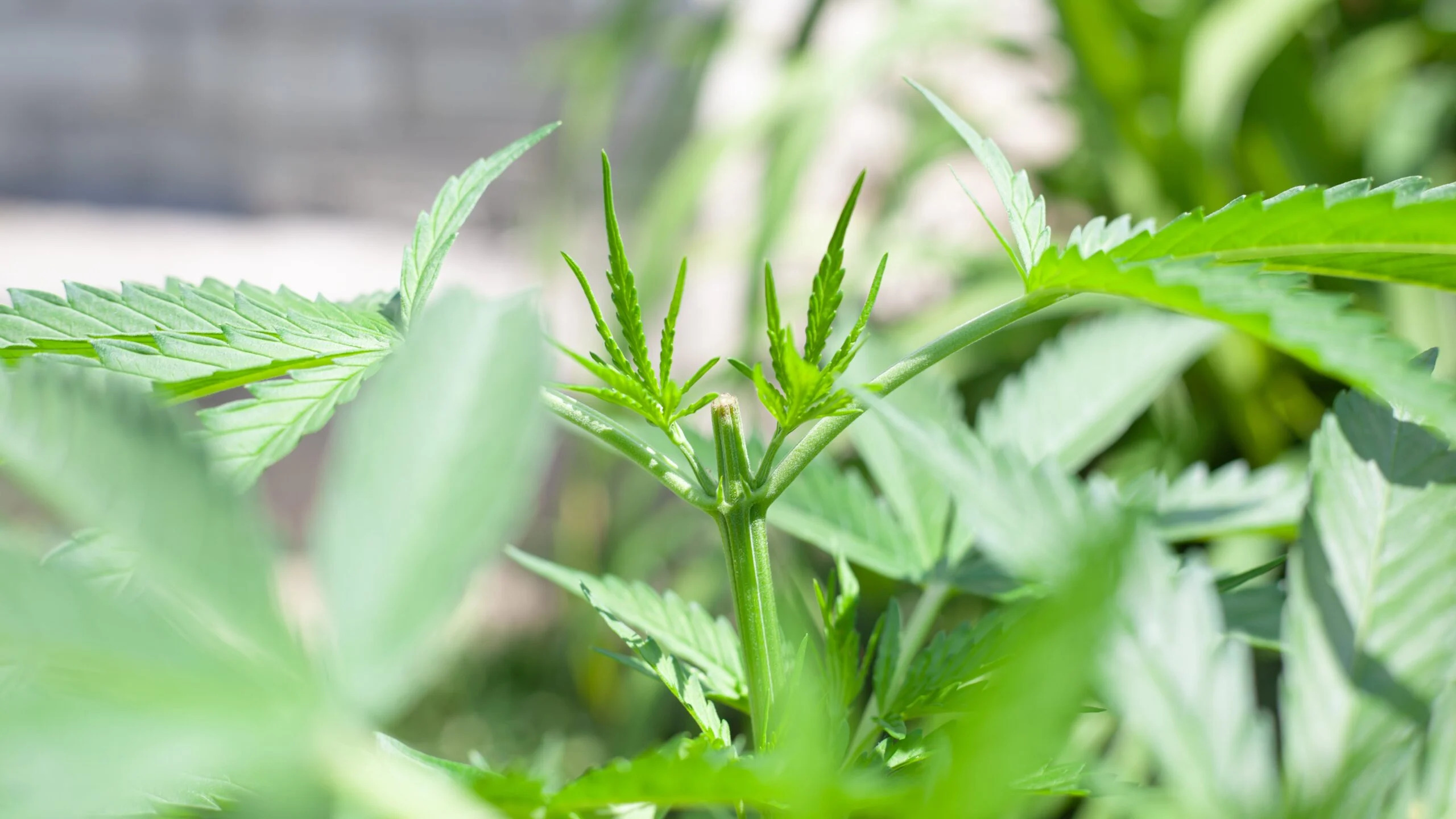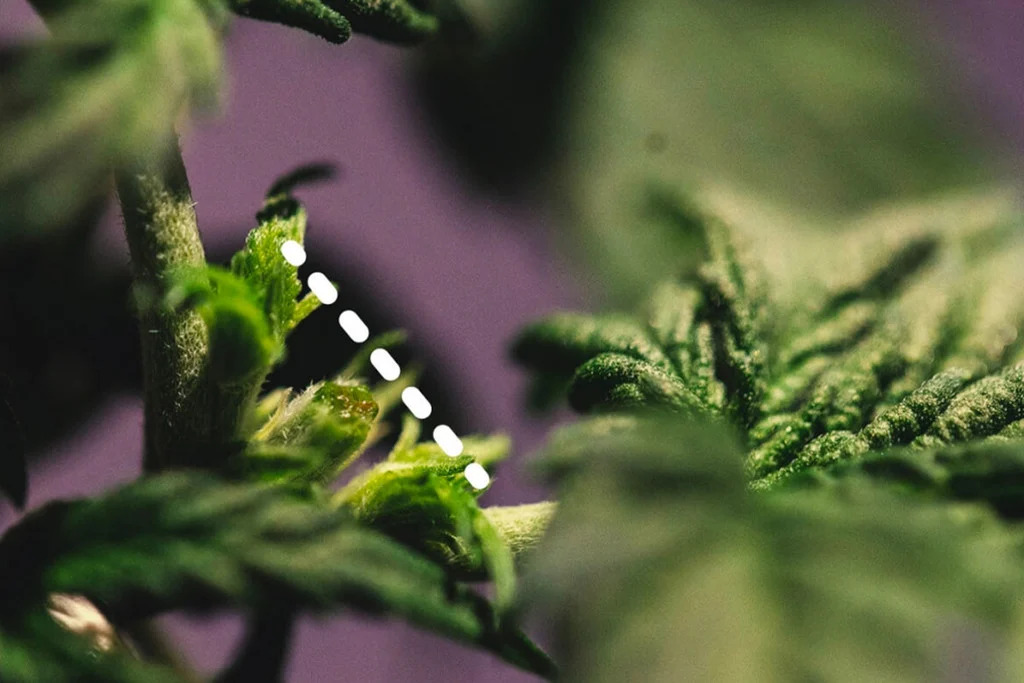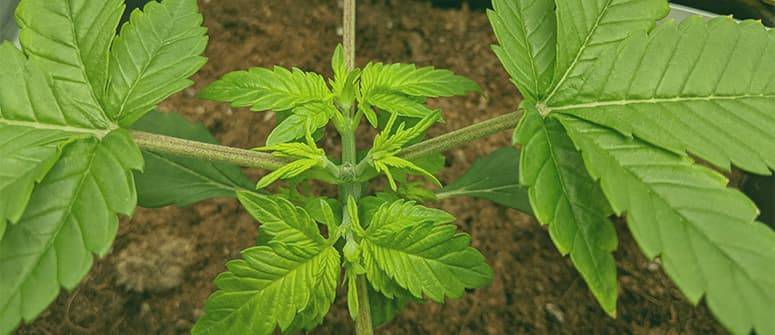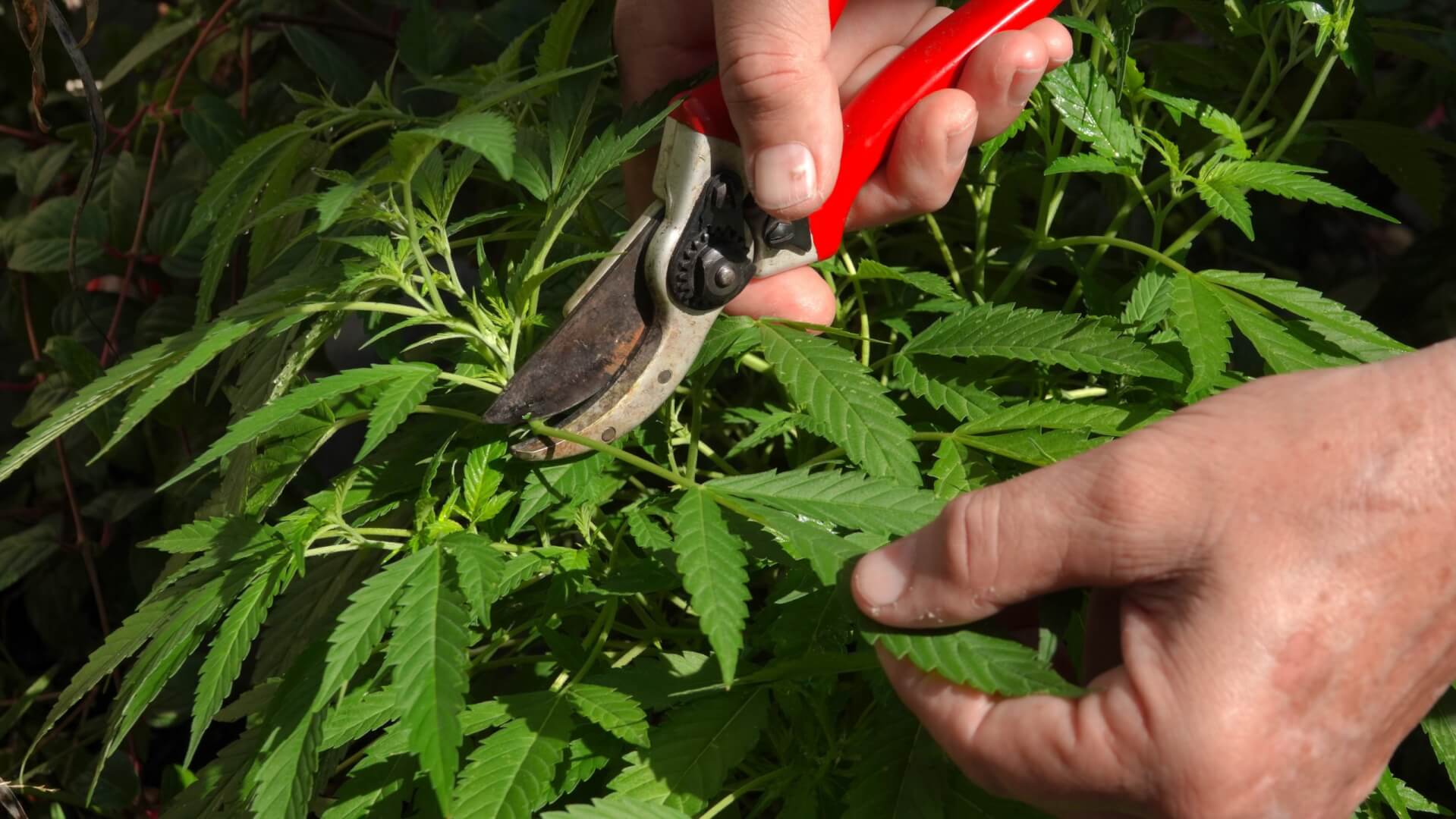Autoflowers are a great way to get a quick harvest. They don’t require much care and they can produce a good yield in just a few weeks. But when it comes to topping autoflowers, there is some debate as to whether or not it is recommended.
Topping an autoflower can help increase yields, but it can also cause stress on the plant and lead to lower yields if done too soon or too often. Generally speaking, it’s best to wait until the fourth week of growth before topping an autoflower. At this point, the plant has had enough time to establish itself and will be better able to handle the stress of topping without losing out on yield potential.
When topping autoflowers, be sure to do so carefully and gently as you could damage the plant if you’re too rough with your trimming. Additionally, make sure to top each branch individually rather than cutting off multiple branches at once for maximum results.
Benefits of Topping Autoflower
The benefits of topping autoflowers are numerous and can help increase yields significantly. Topping an autoflower helps to spread out the canopy, allowing for more light to reach each branch and bud site. This results in bushier plants with more bud sites, which can lead to larger harvests.
Topping also helps to slow down vertical growth, giving the plant more time and energy to produce larger buds. Additionally, topping an autoflower can help reduce the chances of mold or other diseases as it helps to improve air circulation.
Finally, topping can also help promote even growth by ensuring that each branch is getting enough light and nutrients. All in all, topping an autoflower is a great way to increase your yield potential and get bigger harvests!
Experienced Growers
Experienced growers know the importance of topping autoflowers for increased yields and bigger harvests. Topping can help to spread out the canopy, allowing more light to reach each branch and bud site. This results in bushier plants with more bud sites, which can lead to larger harvests.
Additionally, topping helps slow down vertical growth so that the plant has time and energy to create larger buds. Furthermore, topping helps improve air circulation, reducing the chances of mold or other diseases. It also promotes even growth by ensuring that each branch gets enough light and nutrients.
When to Top Autoflower for Experienced Growers
For experienced growers, timing is everything when it comes to topping autoflowers. Topping should be done when the plant is between the 4th and 5th internode, or when it has four established nodes. It's important to wait until after this stage so that the plant has enough time to develop a strong root system and build up a substantial amount of energy for growth.
Once the fourth node has been reached, carefully remove its growing tip to encourage side branching. After topping, give your plants at least a week before adding any additional nutrients or fertilizers. This period allows the plant time to recover from pruning and adjust before further development can begin. With timely topping, experienced autoflower growers can maximize their yields and get bigger harvests!
Tips for Topping Autoflowers for Experienced Growers
Topping autoflowers is a great way for experienced growers to increase yields and improve harvests. When done properly, topping can result in larger plants with more branches and buds. To get the most out of your crop, it's important to time your topping correctly.
For best results, wait until the single plant structure has four established nodes before cutting off the growing tip at the fourth node. After topping, give your plants at least a week before adding any additional nutrients or fertilizers.
This will help ensure that the plant has enough time to recover and adjust before further growth begins. With proper timing and technique, experienced autoflower growers can take their autoflower yields to the next level!
Inexperienced Growers
For inexperienced growers, topping autoflowers can be a bit intimidating. Topping involves cutting off the top of the plant and can have a major impact on yields if not done correctly. The key to success is understanding when to time your topping for best results.
Generally speaking, it's best to wait until the plant has grown four established nodes before beginning the topping process. This will ensure that the cut is made in an optimal spot and won't disrupt future growth too much. It's also important to give your plants at least one week after topping before adding any additional nutrients or fertilizers.
Taking things slow and steady will help ensure that your autoflower plants can adjust properly before continuing their growth cycle. With patience and practice, even inexperienced growers can learn how to get the most out of their autoflower crops!
When to Top Autoflower for Inexperienced Growers
For inexperienced growers, topping autoflowers can seem like a daunting task. The key to success is understanding when to time your topping for best results. Generally speaking, it's best to wait until the plant has grown four established nodes before beginning the topping process.
This will ensure that the cut is made in an optimal spot and won't disrupt future growth too much. When topping autoflowers, it's important to be gentle, making sure not to damage any of the other nodes on the plant. Additionally, give your plants at least one week after topping before adding any additional nutrients or fertilizers.
Taking things slow and steady will help ensure that your autoflower plants can adjust properly before continuing their growth cycle. For those who are just starting with autoflowering seeds, following these guidelines can help you get the most out of your crop!
Tips for Topping Autoflowers for Inexperienced Growers
Topping autoflower plants can be a tricky process for inexperienced growers. It's important to understand the best timing and technique to ensure your plants get the most from the topping process. Generally speaking, it's best to wait until your plants have grown four established nodes before beginning the topping process.
When applying the topping, be sure to use gentle pressure so as not to damage other nodes on the plant. Additionally, give your plants at least one week after topping before adding any additional nutrients or fertilizers. Following these tips will help give you a successful autoflower crop and ensure your plants can adjust properly before continuing their growth cycle!
Considerations Before Topping Autoflowers
Topping autoflower plants can be a great way to increase yields and improve overall growth, but it's important to consider a few key factors before beginning the process. For starters, you'll need to make sure your plants are healthy and growing vigorously.
Additionally, take into account the size of the plant and whether or not topping will induce too much stress on the plant. Finally, be aware of any pests or diseases that may be present in your grow space before starting the topping process.
By taking all these considerations into account, you can ensure your autoflowers can handle the topping process without any issues!
Vegetative Stage and Photoperiod Plant Considerations
When it comes to topping autoflower plants, there are some important considerations for both vegetative and photoperiod plants. For vegetative stage plants, the size of the plant should be taken into account before topping, as too much stress can cause extreme damage. Additionally, it's important to make sure the plant is healthy and growing vigorously before topping.
For photoperiod strains, timing is key - it's best to top them during the early stages of flowering for maximum yield. Additionally, be aware of any pests or diseases that may be present in your grow space and take steps to prevent them from spreading through the topping.
The Flowering Stage and Auto Strains Considerations
When it comes to autoflower strains, the flowering stage is a critical period for the development of buds and maximizing yields. Considerations must be taken into account for both vegetative and photoperiod cannabis strains.
For example, in the vegetative stage, it is important to ensure that the plant is healthy and growing vigorously before topping or pruning. Additionally, it's best to keep track of pests and diseases that may be present in your indoor grow space and take preventative measures to stop them from spreading during this sensitive period.
Light Cycle Feminized Seeds Considerations
Light cycle feminized seeds are a great option for cannabis growers, as they can help increase yields and bud quality. When growing with light cycle feminized seeds, it's important to remember that the length of the light cycle will affect the rate of growth and flowering. Generally, shorter light cycles between 12-18 hours per day are recommended for optimal results.
Additionally, it’s important to maintain consistent temperature and humidity levels to properly stimulate flower formation and reduce stress on the plants. Lastly, be sure to provide adequate nutrients throughout the growth cycle to ensure that your autoflowers reach their full potential yield.
When You Should Avoid Topping Autoflower Cannabis
Topping autoflower cannabis can be a great way to increase the yield of your harvest, but there are certain times when you should avoid it. Topping autoflower cannabis too early in their growth cycle can cause them to become lanky and weak, resulting in weaker buds.
Additionally, topping an autoflower that has already started flowering or is nearing the end of its life cycle can lead to a decrease in bud quality due to stress on the plant. To ensure your plants reach their full potential, wait until they have developed several sets of leaves before topping them and only top them once per plant.
Plant Selection
Choosing the right plant for your growing space is the first step towards achieving a high-quality harvest. Autoflowers are generally easy to care for and have short life cycles, making them perfect for small spaces or those with limited time. When selecting an autoflower, consider the size of your grow area and the amount of light and nutrients it will receive.
Different autoflowering strains may require different levels of light and nutrients, so make sure to research each strain thoroughly before making your selection. Additionally, take into consideration how much yield you expect from each plant; some produce more than others!
Read More: Can You Clone Autoflower
Topping Your Plant
Topping your autoflower cannabis plant is the process of cutting off the main stem at the top, allowing for more lateral branches to grow. Topping can be done once or multiple times depending on the desired size, but should generally not exceed 3-4 times as it may cause too much stress to the marijuana plant.
Additionally, the topping should not be done too early, as this could stunt growth and reduce yields. Wait until your autoflower has grown several sets of leaves before pruning. When topping your entire plant, use sharp clean scissors and cut just above a node (where leaves or branches come out).
This will encourage two new shoots to form in place of the one that was removed. With proper care and maintenance, topping can help create larger marijuana plants with higher yields!
Read More: Hydroponic vs. Soil Cannabis Cultivation
Monitoring Your Plant
Monitoring your autoflower cannabis plant is an important part of ensuring a successful harvest. Regularly check for signs of pests, disease, and nutrient deficiencies. Look out for yellowing leaves, wilting, or stunted growth as these can all indicate problems.
Additionally, monitor the size and shape of your autoflower; topping it if necessary to ensure that it is getting plenty of light and air circulation. Pay special attention to the buds – they should appear swollen and sticky when ready for harvest.
Finally, keep track of the age of your auto plant so you know when to expect a harvest! With these simple steps, you can ensure your autoflower grows healthy and produces a bountiful yield.
Read More: Cannabis Landrace
Tools Needed to Top Autoflower Plants
Topping autoflower cannabis plants is an effective way to increase yield, but it requires the right tools and techniques. For starters, you'll need a pair of sharp scissors or pruning shears. Before topping, be sure to sterilize your tools with rubbing alcohol to prevent the spread of disease.
You'll also want to have a magnifying glass on hand to inspect your healthy plant closely and accurately trim the tops. Finally, make sure you wear gloves while working to protect yourself from any potential allergens. With these simple tools and a bit of practice, topping autoflowers will become second nature!
Sharp Pair of Scissors or Clippers Necessary?
Aside from a sharp pair of scissors or clippers, there are other supplies you'll need to top autoflower cannabis plants. To ensure accuracy, you may want to have a magnifying glass on hand so that you can inspect your plant closely.
Additionally, make sure to wear gloves while working as some allergens may be present. Finally, it is important to sterilize your tools with rubbing alcohol before use to prevent the spread of disease. With these simple tools and techniques, topping autoflowering cannabis plants will become an easy task!
Read More: Mixing Chocolate and Cannabis
Training Method Options When Topping an Autoflower
When topping an autoflower plant, several training method options can be used to promote healthy growth and increased yields. Low-stress training (LST) involves bending or tying the stems of plants to encourage lateral growth.
High-stress training (HST) is a more aggressive approach that involves cutting away sections of the plant to stimulate new growth and shape the plant's canopy. Supercropping is another option that involves pinching and gently twisting stems to create stress on the plant while avoiding breaking them.
FIMing is similar but instead of pinching, you will remove a small portion of the stem with scissors or a razor blade. Pinching and defoliation involve removing some leaves or branches from the cannabis plant to increase airflow and light penetration throughout the canopy.
Pruning, tying down, cloning, grafting, and SOG techniques are all additional options for topping autoflowers that can help you achieve larger yields and healthier plants.
Read More: 10 Amazing Things To Do When High
What Have We Learned?
The proper topping of autoflower plants can be a great way to maximize the yields of your auto bud. It needs to be done carefully and strategically though, because while good timing will result in multiple colas and larger buds, bad timing can ruin the whole crop. Topping autoflowers requires know-how and experience, so if you’re new to growing it is best to gain some insight with a few successful grows first.


 Français
Français 



